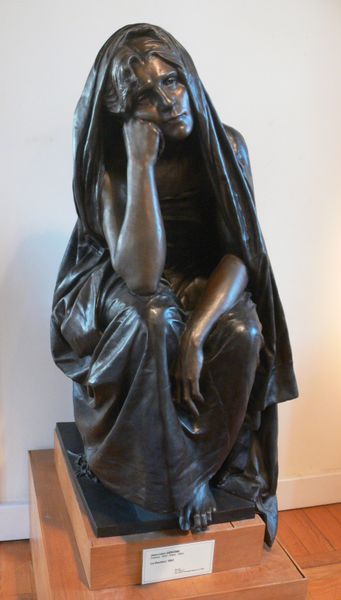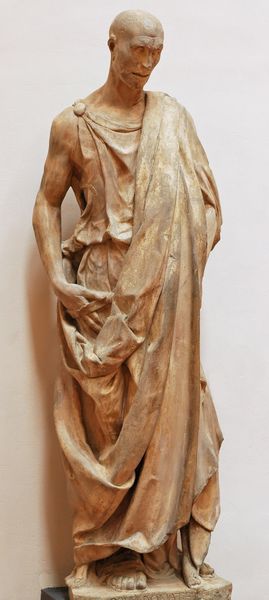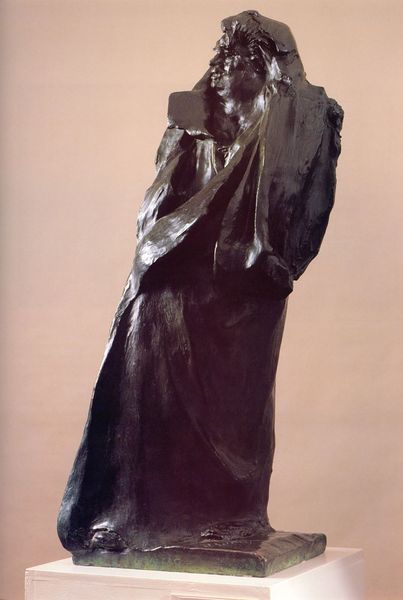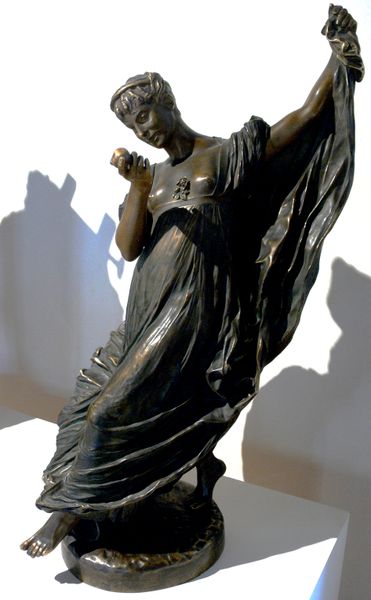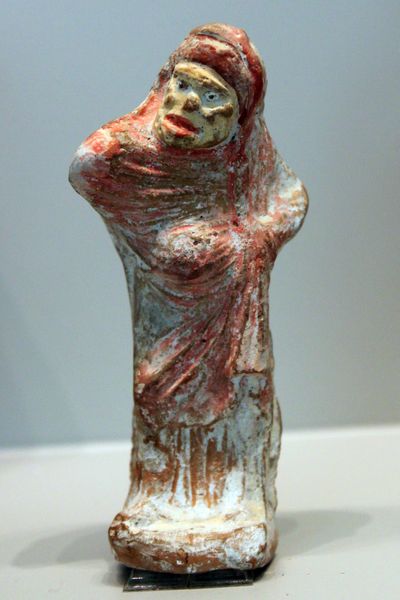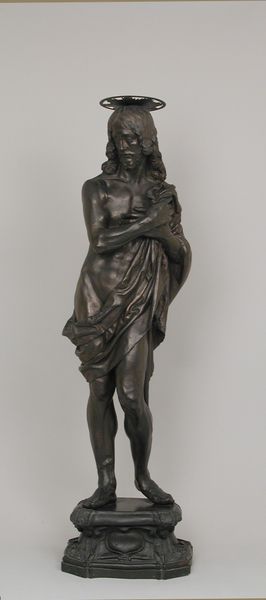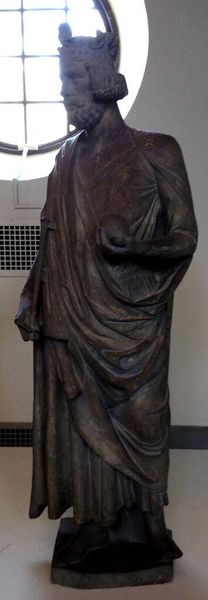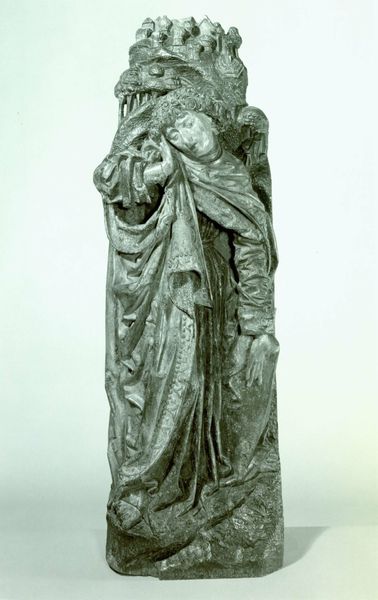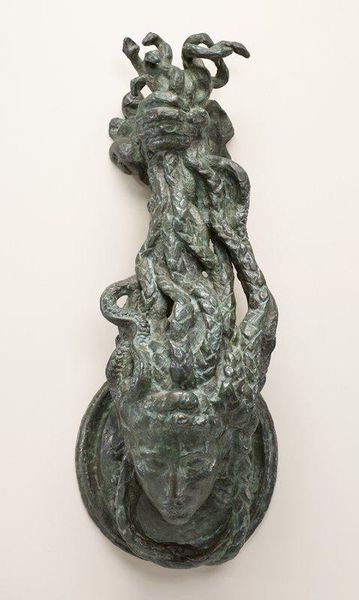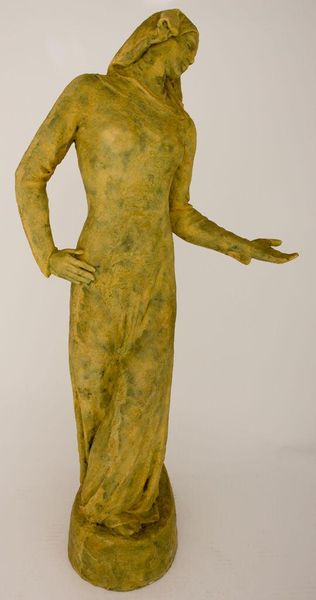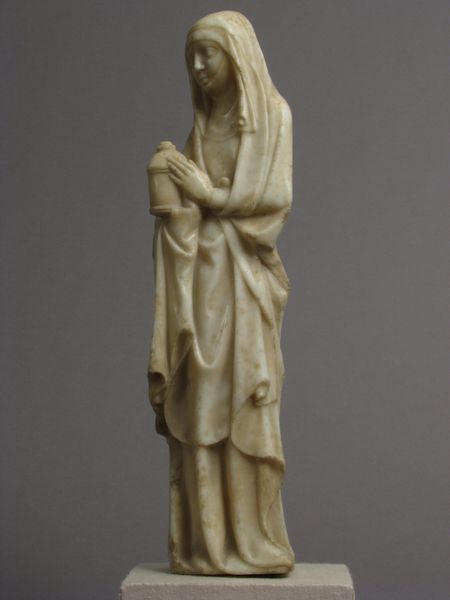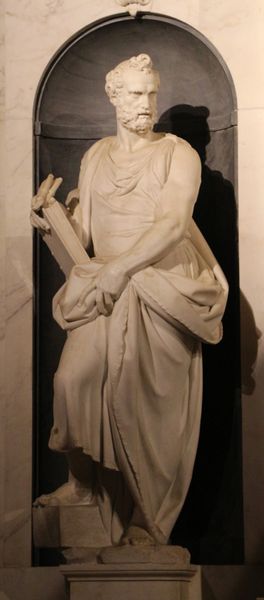
Copyright: Public domain
Curator: This sculpture is called "The Oracle of Snakes" by Jean-Léon Gérôme, created in 1899. The work is made from bronze, presenting us with a full-length, classical figure. Editor: My immediate impression is one of quiet introspection. The figure’s gaze is directed downward, and the snake almost feels like an intimate confidant rather than a symbol of power. Curator: That’s a fascinating observation. Considering Gérôme’s academic approach, especially his revival of classicism, the sculpture can be read as a statement on the perceived authority and role of the 'oracle' in ancient society, something being reimagined during his time as modern institutions were being created. We should think about whose voices were amplified back then – and still are. Editor: Right, who gets to be an "oracle"? If we apply an intersectional lens, we must also consider who gets to interpret history and its implications. Who decides the oracle’s gender? Their power dynamics within their society? I think there's an implication in Gerome's choices here of a deliberate historical fiction to explore contemporary biases and gendered power. Curator: Precisely. Gérôme's piece uses the historical framework of ancient practices to potentially invite contemporary discourse. This touches upon the colonial gaze prevalent during the 19th century and how ancient civilizations were often appropriated and misrepresented through European artistic endeavors. Editor: Yes! The “classical” aesthetic often masks very deliberate and constructed ideologies about what constituted civilized society, then and now. It really begs us to confront that narrative and ask about the snakes too - where does their voice come into it, who did they oracle for, what happened to the snake's power when this 'oracle' became history? Curator: Excellent point! In reflecting on the bronze work and discussing the contexts that have come up, it offers much food for thought on whose voices carry weight both within and beyond art history. Editor: It pushes us to look at classical sculptures like "The Oracle of Snakes" not merely as aesthetic objects, but as contested sites reflecting societal anxieties and the ever-present renegotiation of cultural power.
Comments
No comments
Be the first to comment and join the conversation on the ultimate creative platform.
